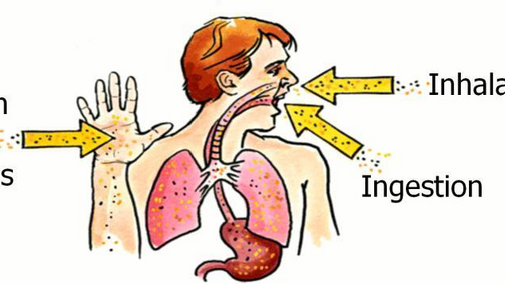For nearly three decades, the Agricultural Health Study (AHS) has publicized new results about the effects of pesticides on applicators and their families.
It’s a sure bet that in 20 or 30 years, more chemicals will be found to negatively affect human health.
Don’t wait for a study to tell you to work more safely around chemicals. Adjust your thinking now: Be proactive and protect yourself with proper personal protective equipment (PPE). Regardless of whether the label calls for it. Regardless of whose study is cited.
A key AHS safety principle bears repeating: Wear PPE to protect skin, lungs, and eyes from pesticide exposure.

Pesticides can enter the body in three ways (Figure 1):
- orally, through the mouth;
- by inhaling, through the lungs; and
- dermally, through the skin or eyes. This is the most common way applicators come into contact with pesticides.
Also see in CropWatch:
Key Findings of the Agricultural Health Study Since 2015The pesticide label notes what PPE needs to be worn to be safe. At a minimum, though, PPE is a long-sleeved shirt, long pants, shoes, socks, and gloves. Goggles and respirators for eye and lung protection also may be required by the label. Even if the label doesn’t call for particular PPE, use common sense and protect yourself. Cover your skin. Protect your eyes and lungs.
If the label does call for particular PPE, wear it. The label is the law.

